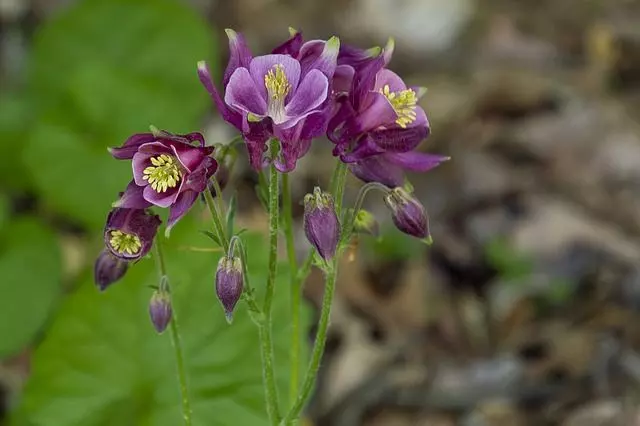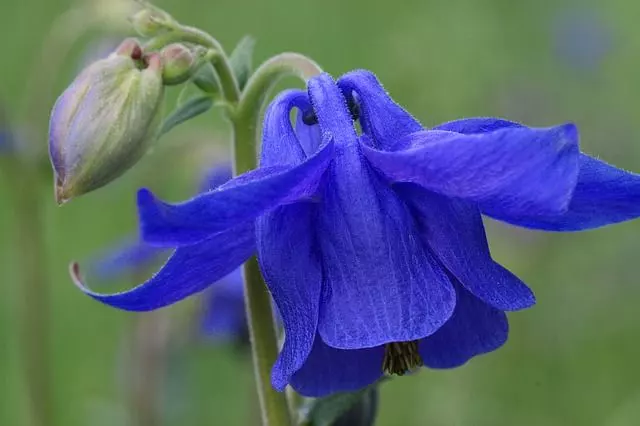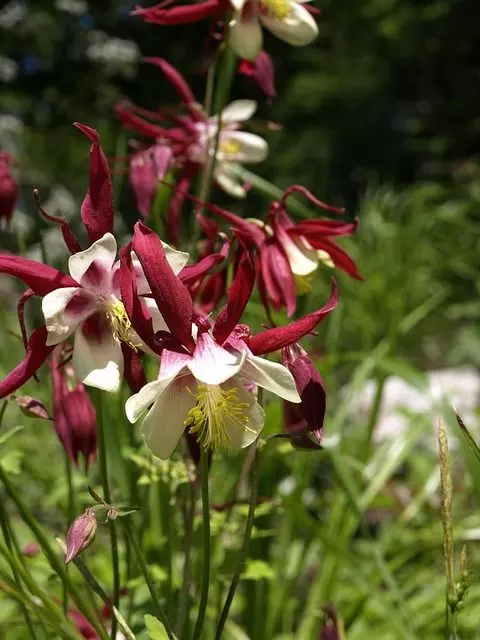Aquilegia vulgaris, commonly known as Columbine, is a graceful herbaceous plant that flowers in spring with striking flowers of many different colors. Its cultivation is not complicated, but certain factors must be met to grow happy, in the garden or pots, and give us many joys. Learn all about Care of Columbine Plant in this post.
Table of Contents
Columbine Flower Plant Description
The common Columbine is a perennial herbaceous plant native to the temperate zones of Europe and Asia. Each winter, with the cold, the entire aerial part of the plant disappears to re-sprout the following spring. The thin and hairy stems of the aquilegia can reach a height of 4 ft (1.2 m). It has large leaves at the base that decrease in size as the stem gets longer. They are petiolate, lobed, and dark green. The flowers are grouped at the end of flower stems of about 2” – 2.4” (5 – 6 cm), are striking, and have a long spur. The common variety (Aquilegia vulgaris) blooms in purple-blue or white, although other varieties have pink, burgundy, or yellow flowers.
The name of the genus Aquilegia comes from the Latin word “aquila” (eagle) and refers to the five spurs of the flower that resemble the claw of an eagle. There are many different cultivars available in commerce, with flowers that are single or double, and with short spurs or without spurs, in a wide variety of colors.
Care of Columbine Plant
All varieties of yarrow need a soil rich in organic matter and well-drained. Aquilegia vulgaris is the exception that can grow in calcareous soils. They should be planted in full sun or with some shade and require mild temperatures, neither too cold nor too hot. Ideally, the temperature should be around 68°F (20°C).
These plants can be transplanted in early spring. At the time of planting, it is advisable to fertilize them with an organic fertilizer: a handful of humus or manure in the planting hole. During the season they will appreciate a mineral fertilizer for flowering plants.
Columbine like a moderate watering that keeps the soil slightly humid but not waterlogged. During the summer it should be more frequent to relieve the dryness of the season. Even if the plant stops blooming, its beautiful foliage continues to offer interest in the garden. When the winter arrives, with the cold, the stems and leaves will also disappear, while the plant enters into vegetative rest.

Growing Columbine Flower from Seed
Plants can be easily reproduced from seeds that self-sow in the garden and become naturalized over time. You can also multiply the Columbine by dividing the bush.

Pests and Diseases
Columbine is susceptible to leaf miners. Aphids can affect him, but they are a minor problem that can be treated ecologically. As long as the leaves are green, they should be watered. The foliage usually withers in mid-summer, when it can be cut at ground level.
Columbine Gardens
Columbine has multiple applications both in the garden soil and in pots. They are beautiful in herbaceous or mixed borders, in perennial clumps, in rockeries, or naturalized areas. They are also a good choice to attract butterflies, hummingbirds, and other pollinators.

